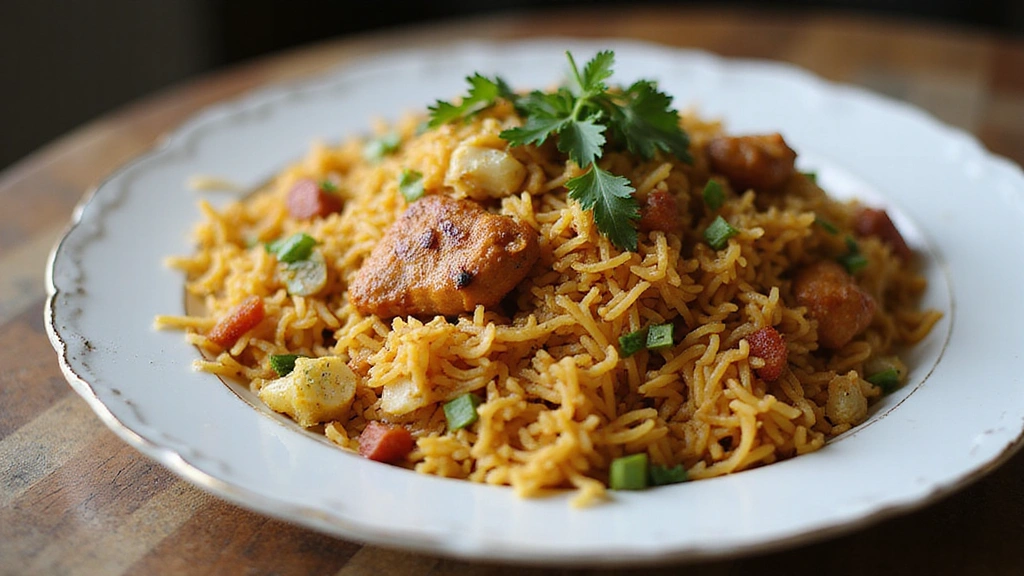I discovered this recipe during my travels through South Asia, where local chefs have perfected it through generations of careful refinement.
Whether you’re preparing a casual family dinner or hosting a special celebration, this Chicken Biryani delivers impressive results with straightforward preparation.
The harmonious balance of spices and tender chicken creates a memorable dining experience that will have everyone asking for your secret.
This classic Chicken Biryani brings together centuries of culinary tradition with modern techniques to create a dish that’s both comforting and elegant.
The History and Cultural Significance
• The Best Chicken Biryani traces its origins to the Indian subcontinent in the Mughal era, where it was originally created by royal chefs.
• The dish evolved over decades as different regions incorporated local spices and ingredients, eventually becoming the beloved version we know today.
• In South Asian culture, this dish traditionally appears at weddings and festivals, symbolizing abundance and hospitality.
• While many variations exist across different regions, the authentic version maintains a delicate layering of flavors that sets it apart from imitations.
Recipe Overview
Nutritional Information
Essential Equipment Guide
Heavy-bottomed Pot: This equipment is crucial for maintaining even heat distribution, preventing the rice from sticking or burning. Alternatives include a Dutch oven or a thick cast-iron skillet. Look for a pot with a tight-fitting lid to properly steam the rice.
Mortar and Pestle: Essential for grinding spices to release their full aroma, enhancing the dish’s flavor profile. A spice grinder can be used as an alternative, but freshly ground spices make a noticeable difference. Choose a sturdy model for best results.
Rice Strainer: Important for rinsing rice to remove excess starch and achieve separate, fluffy grains. A fine-mesh sieve can substitute. Ensure it is large enough to handle the rice quantity in one go.
Ingredients
For the Chicken Marinade
|
|
| Amount | Ingredient | Notes |
|---|---|---|
| 1 kg | chicken pieces | cut into medium-sized pieces |
| 1 cup | yogurt | acts as a tenderizer |
| 2 tablespoons | ginger-garlic paste | adds depth of flavor |
| 1 teaspoon | turmeric powder | for color and aroma |
For the Rice
| Amount | Ingredient | Notes |
|---|---|---|
| 2 cups | basmati rice | long-grain for authentic texture |
| 4 cups | water | for boiling |
| 2 teaspoons | salt | enhances flavor |
Seasonings
| Amount | Ingredient | Notes |
|---|---|---|
| 2 teaspoons | garam masala | adds warmth |
| 1 teaspoon | cumin seeds | for aromatic depth |
| 5 pods | cardamom | for floral notes |
Garnishes
| Amount | Ingredient | Notes |
|---|---|---|
| 1 cup | fried onions | adds sweetness and crunch |
| 1/4 cup | fresh coriander leaves | for freshness |
| 1/4 cup | fresh mint leaves | for a refreshing aroma |
Preparation Methods
Layering Technique: This process involves layering partially cooked rice with marinated chicken to allow flavors to meld. It's crucial for the signature taste of biryani. To master it, ensure each layer is even and use a gentle hand to avoid compacting the rice.
Blooming Spices: This technique involves frying spices in hot oil to release their essential oils, enhancing the dish's aroma and flavor. It matters because it lays the foundation of flavor. Use medium heat and avoid burning the spices for the best results.
Steaming (Dum Cooking): A traditional method where the pot is sealed and cooked over low heat, allowing flavors to infuse. This is key for tender chicken and fragrant rice. Make sure the pot is tightly sealed to trap steam effectively.
Step 1: Prepare Ingredients
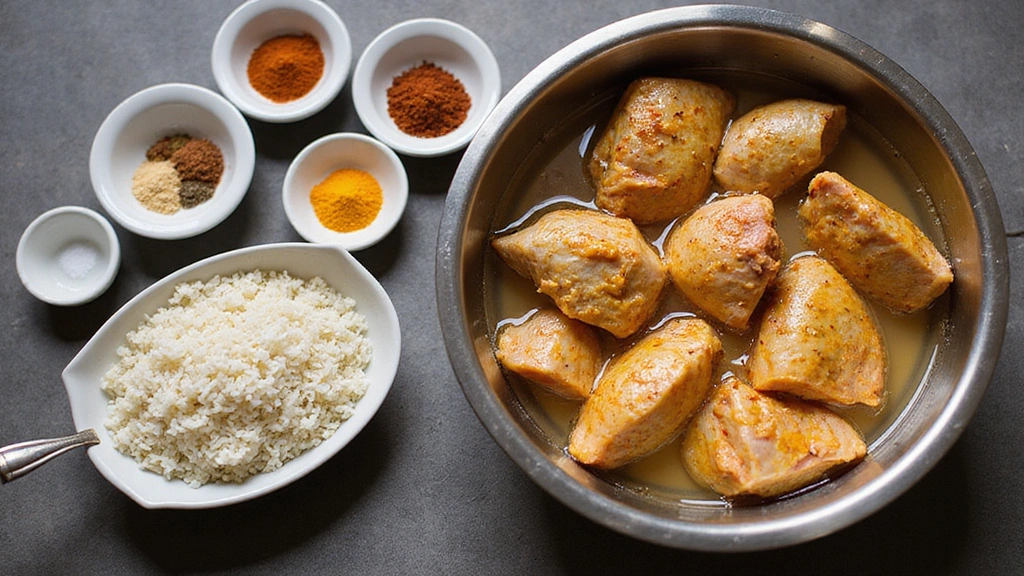
Gather all your ingredients before you begin cooking.
Wash and soak the basmati rice in water for 30 minutes.
Cut the chicken into medium-sized pieces and set aside.
Measure out all spices and seasonings to ensure a smooth cooking process.
Step 2: Marinate the Chicken

In a large bowl, combine chicken pieces with yogurt, ginger-garlic paste, and turmeric.
Mix well to ensure each piece is evenly coated.
Cover and refrigerate for at least 1 hour to allow flavors to develop.
This marination process is crucial for tender and flavorful chicken.
Step 3: Cook the Rice

Bring a large pot of water to a boil and add salt.
Drain the soaked rice and add it to the boiling water.
Cook until the rice is about 70% done, with grains slightly firm to the bite.
Drain the rice and set aside, ensuring it does not overcook.
Step 4: Bloom the Spices
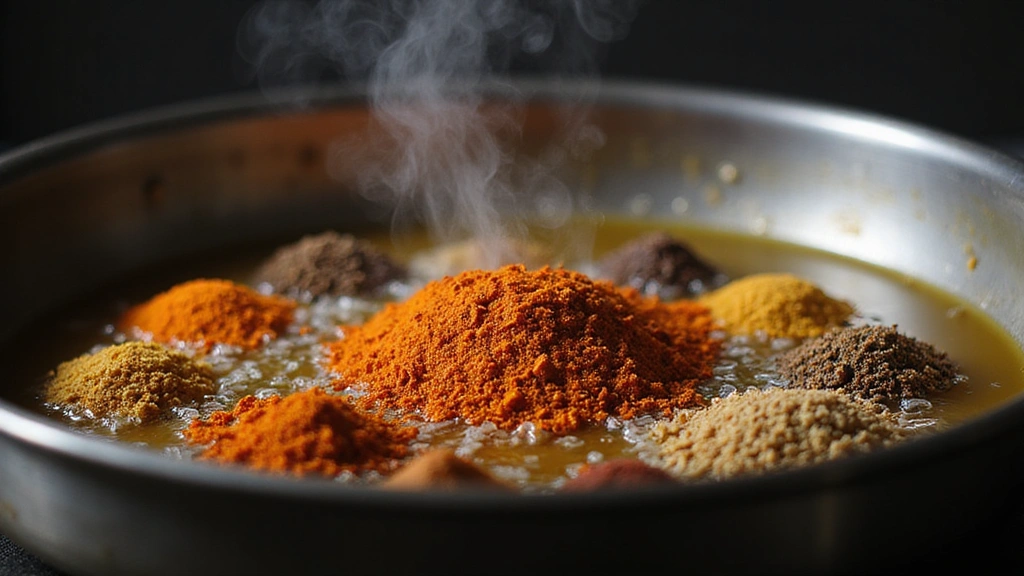
Heat oil in a heavy-bottomed pot over medium heat.
Add cumin seeds, cardamom pods, and garam masala.
Stir continuously until the spices release their aroma.
This step is essential for the dish's aromatic foundation.
Step 5: Cook the Chicken
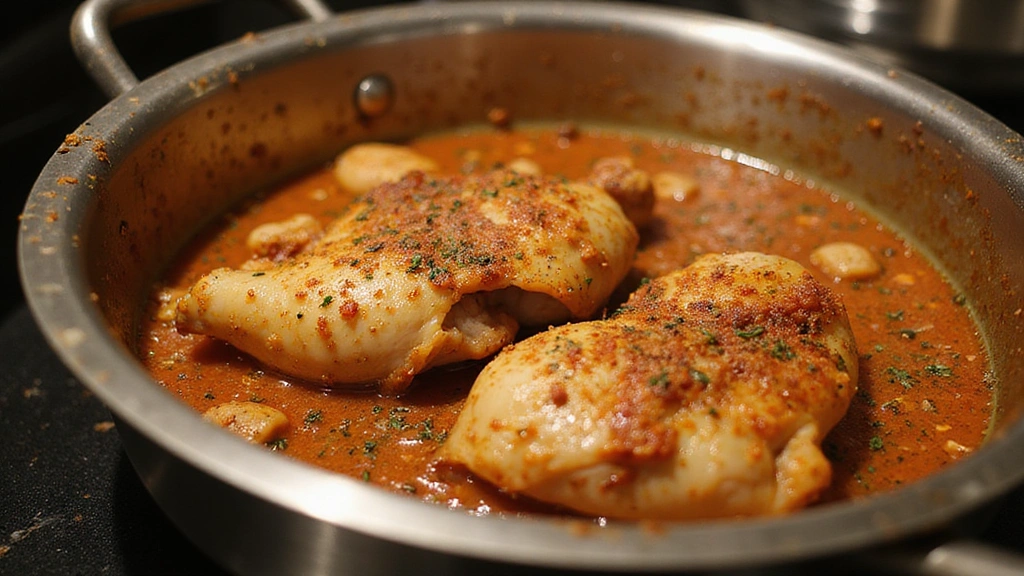
Add the marinated chicken to the pot with bloomed spices.
Cook on medium heat until the chicken is browned on all sides.
Ensure the marinade thickens slightly during cooking.
Stir occasionally to prevent sticking or burning.
Step 6: Layer the Biryani
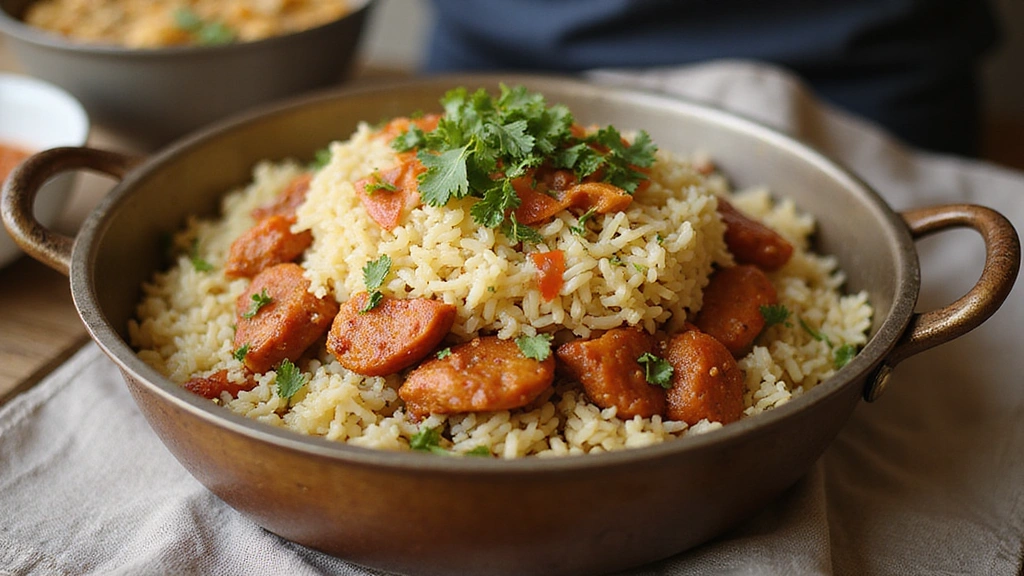
Reduce the heat to low and begin layering the cooked rice over the chicken.
Add a layer of fried onions, coriander, and mint leaves.
Repeat the layers until all ingredients are used, finishing with rice on top.
Ensure even distribution for balanced flavors.
Step 7: Seal and Steam
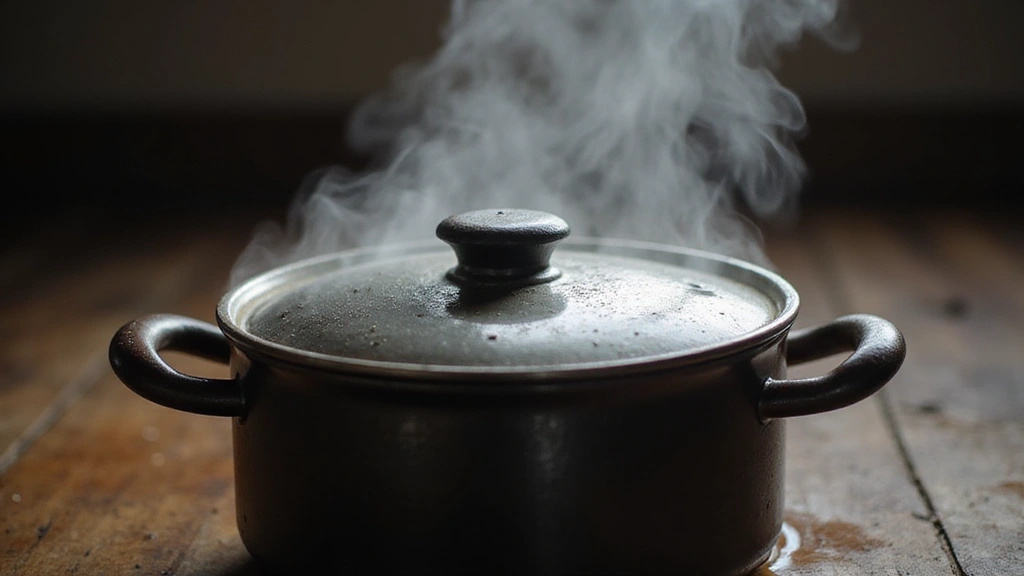
Cover the pot with a tight-fitting lid or foil to trap steam.
Cook on low heat for 20 minutes to allow flavors to meld and rice to finish cooking.
Occasionally check for steam escaping and adjust the seal if needed.
This 'dum' process is critical for achieving authentic biryani texture.
Step 8: Serve the Biryani
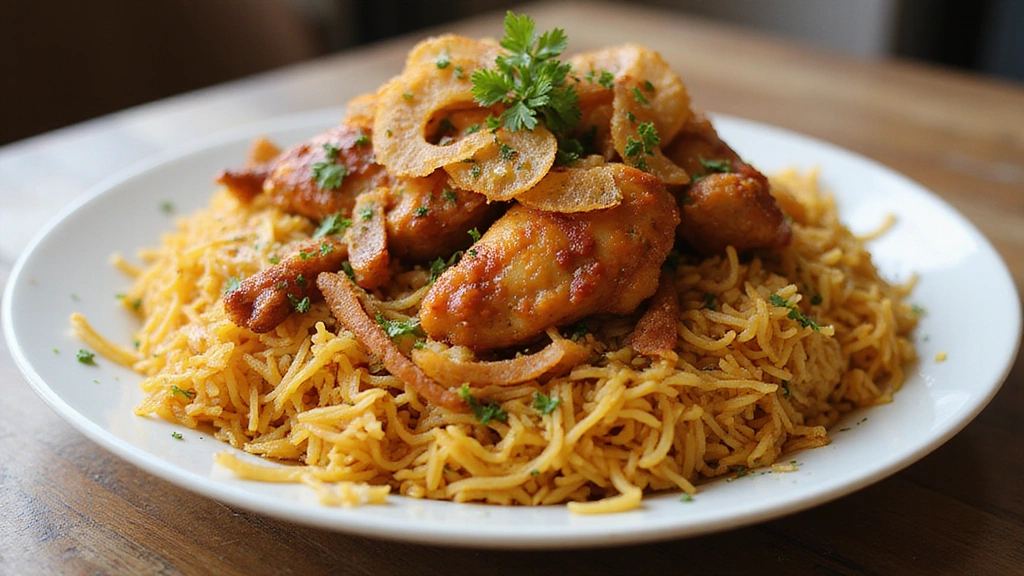
Gently fluff the biryani with a fork to mix the layers without breaking the rice grains.
Transfer to a serving platter, taking care to showcase layers.
Garnish with additional fried onions and herbs for presentation.
Serve hot with raita or salad for a complete meal.
Critical Timing and Temperature Guide
Cooking Rice: Boil for exactly 7-8 minutes, aiming for al dente texture. Overcooking can lead to mushy layers.
Marination: Refrigerate for at least 1 hour, but not exceeding 12 hours for optimal flavor absorption.
Steam Cooking: Maintain a consistent low heat for 20 minutes, ensuring the pot is well-sealed to avoid drying out the dish.
Pro Tips for the Best Chicken Biryani
• Ingredient Selection: Use high-quality basmati rice for its long grains and aromatic quality, as well as fresh, whole spices for the most vibrant flavor.
• Preparation Secret: Toast spices briefly before using them to enhance their natural oils and flavor profiles, a step often skipped by home cooks.
• Temperature Management: Use room temperature yogurt for marination to ensure even coating and absorption by the chicken.
• Texture Enhancement: Fluff rice gently with a fork post-cooking to maintain its integrity and separate the grains effectively.
• Flavor Layering: Use a mix of fresh herbs and fried onions between layers to infuse each bite with complexity.
• Make-Ahead Strategies: Prepare fried onions and marinate chicken a day in advance. Store onions in an airtight container to maintain their crunch.
• Restaurant-Quality Finishing Touches: Add a few saffron strands soaked in milk to the top layer for authentic color and aroma.
• Equipment Optimization: For best results, use a non-stick or heavy-bottomed pot to prevent rice from sticking and ensure even cooking.
Troubleshooting Common Issues
• Rice Too Mushy: This often happens due to overcooking during boiling. Ensure you taste the rice for doneness and remove from heat while it's still slightly firm.
• Chicken Too Tough: Resulting from insufficient marination time or overcooking. Always marinate for at least 1 hour and monitor closely while cooking.
• Flavors Not Blending: Often due to insufficient steaming time or improper layering. Ensure layers are even and steaming time is adhered to for flavor infusion.
• Spice Level Too Intense: Caused by inaccurate measuring or not using whole spices. Adjust spices to taste and remember that whole spices offer a more nuanced flavor.
• Rice Sticking to Pot: This can occur from using a thin pot or high heat. Always use a heavy-bottomed pot and keep heat low during steaming.
Variations and Regional Differences
• Hyderabadi Biryani: Known for its use of raw meat, which cooks along with the rice and spices, creating a distinct flavor profile. Saffron and rose water are often added for aroma.
• Kolkata Biryani: Characterized by the inclusion of boiled eggs and potatoes, it has a slightly sweeter taste and uses fewer spices.
• Lucknowi (Awadhi) Biryani: This version involves cooking rice and meat separately and then layering them, with a focus on aromatic spices rather than heat.
• Sindhi Biryani: Includes yogurt and tomatoes, giving it a tangy flavor. Green chilies and mint are also prominent for added freshness.
Food Science Behind the Recipe
• Maillard Reaction: This chemical reaction occurs during the browning of chicken, enhancing flavor through the development of complex molecules.
• Gelatinization of Starch: When rice is cooked, the starch absorbs water and swells, becoming soft and digestible, which is crucial for the biryani's texture.
• Emulsion in Marination: The combination of yogurt and spices creates an emulsion that coats the chicken, aiding in tenderization and flavor absorption.
Frequently Asked Questions
What's the most common mistake people make when preparing Chicken Biryani? Overcooking the rice or undercooking the chicken are frequent issues. Ensuring proper timing and layering is key to a successful dish.
Can I use brown rice instead of basmati? Brown rice can be used, but it requires a longer cooking time and may alter the traditional texture and flavor.
How can I make the biryani less spicy? Reduce the amount of chili powder and use milder spices while still maintaining the dish's essential components.
What can I serve with Chicken Biryani? Raita, salad, or a simple cucumber yogurt dip complements the flavors and balances the spices.
Why is my biryani dry? This could be due to insufficient steaming or not enough moisture in the chicken marinade. Ensure adequate liquid content and proper sealing during steaming.
How do I store leftovers? Store in an airtight container in the refrigerator for up to 3 days. Reheat gently to avoid drying out.
Can I make biryani in an Instant Pot? Yes, but adjustments in liquid and timing are needed to prevent overcooking and achieve the right texture.
Serving and Presentation Guide
• Traditional Presentation: Serve directly from the cooking pot to showcase the layers, garnished with fresh herbs and fried onions for color and aroma.
• Family-Style Platter: Arrange the biryani on a large serving platter, allowing guests to see the beautiful layering of rice and chicken.
• Individual Servings: Use small bowls to portion out biryani, topped with a sprinkle of fresh coriander and a side of raita.
• Decorative Garnishing: Add edible flowers or thin slices of lime for a pop of color and a hint of freshness.
Conclusion
Embark on a culinary adventure with this Chicken Biryani recipe that brings the essence of South Asia to your kitchen.
With its fragrant spices and tender chicken, each bite is a celebration of flavor and tradition.
Try this recipe today and delight your family and friends with a dish that embodies warmth and hospitality.
